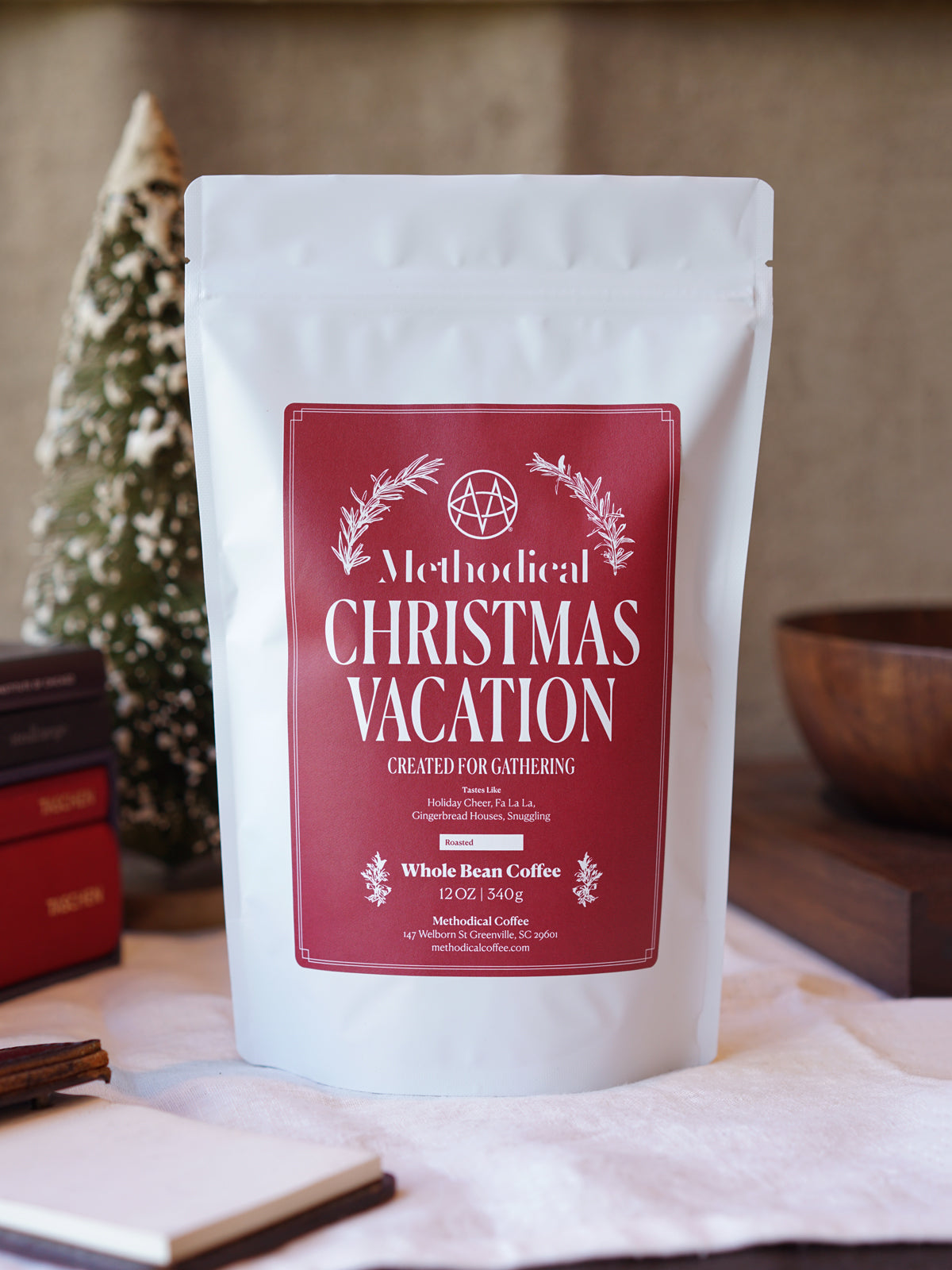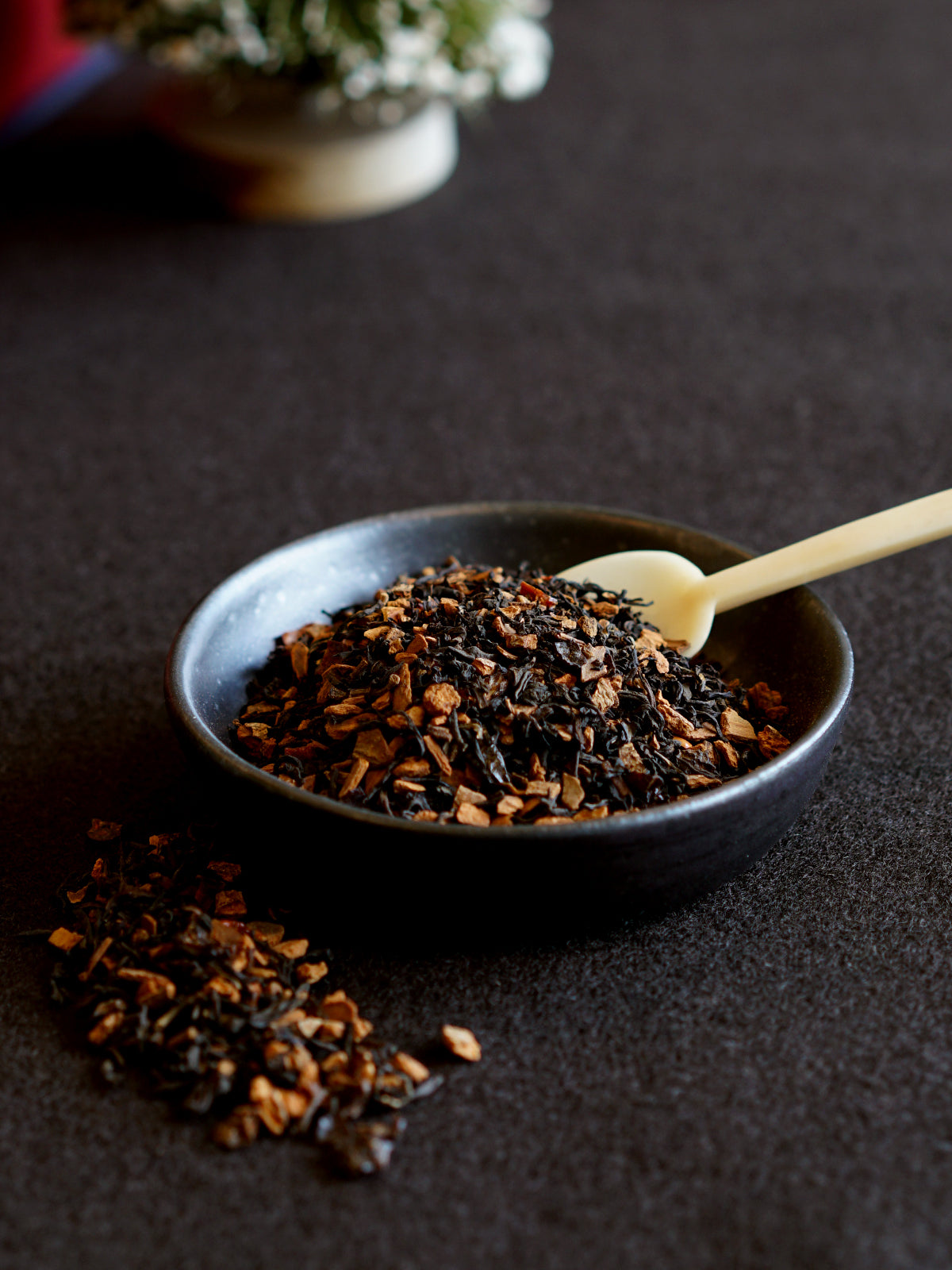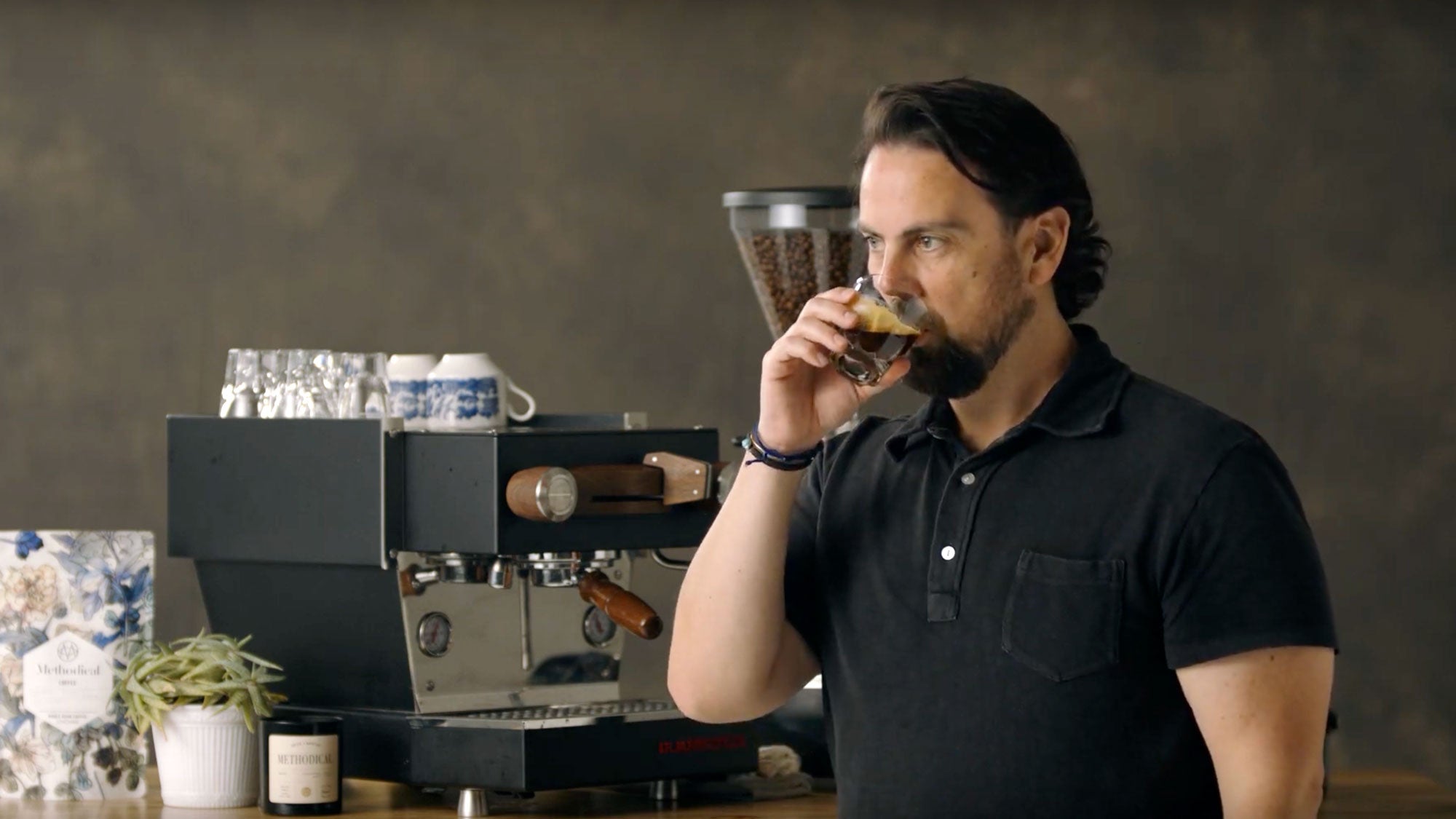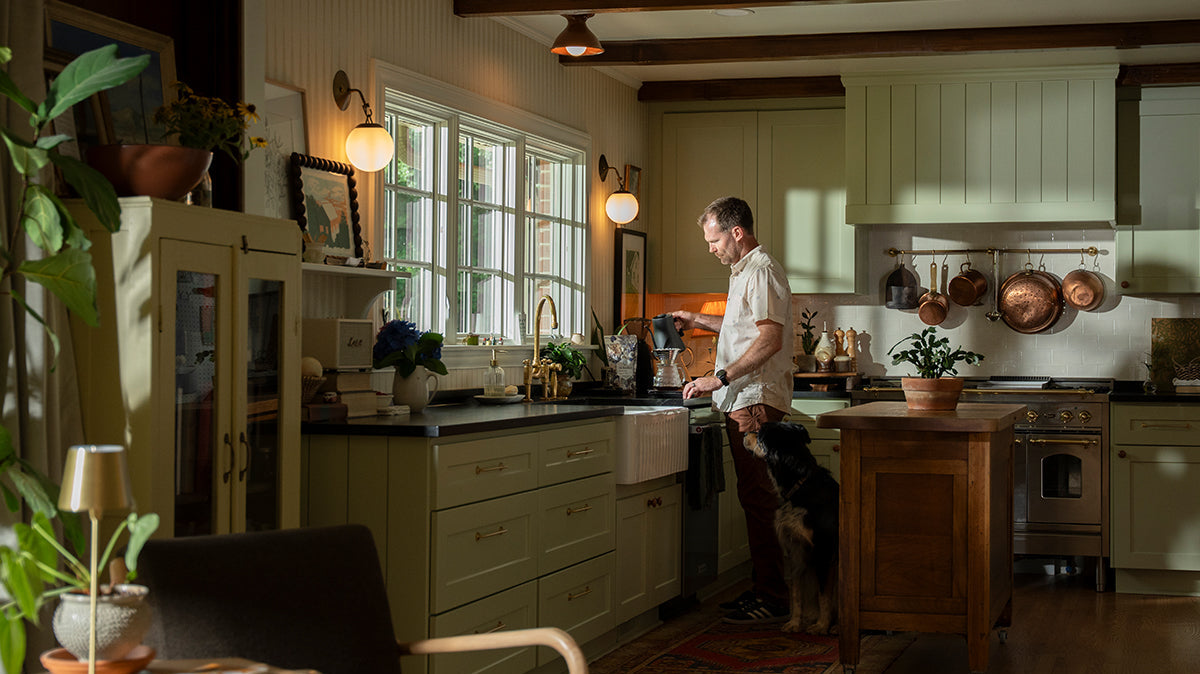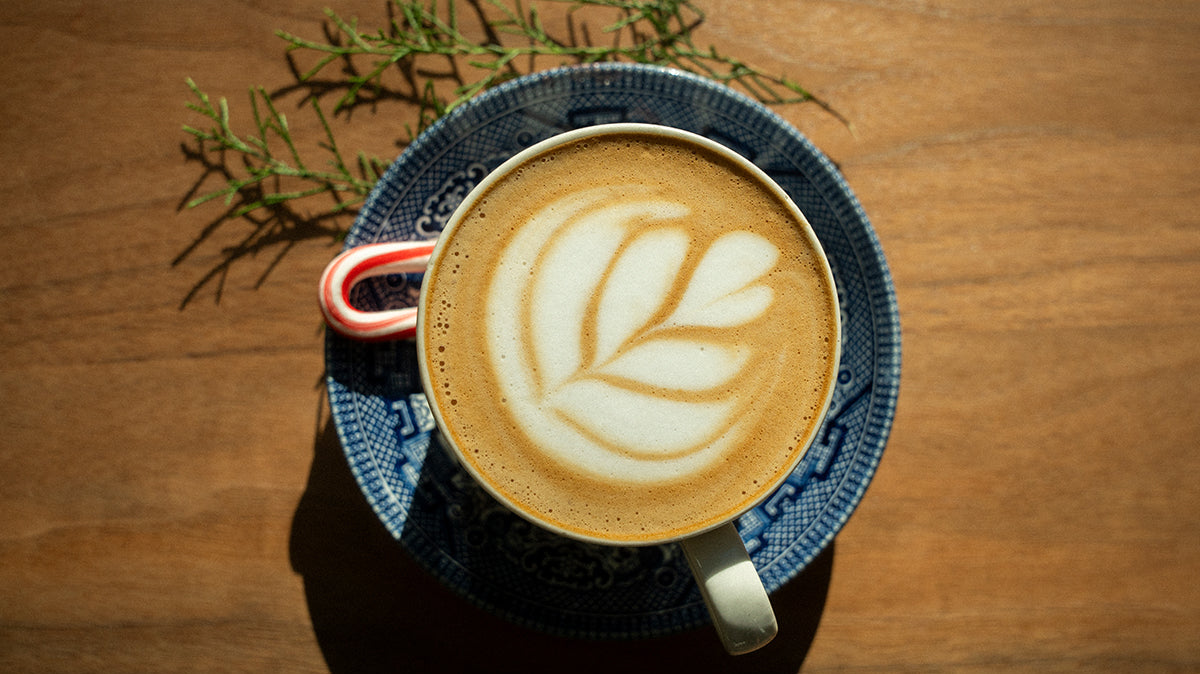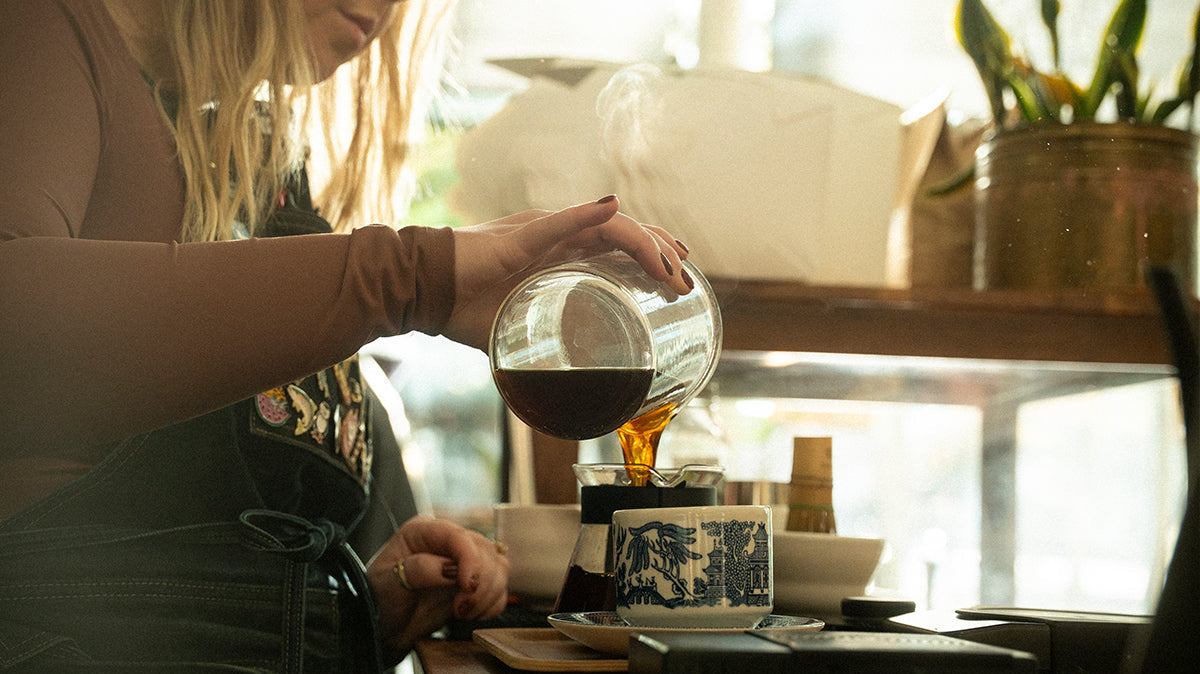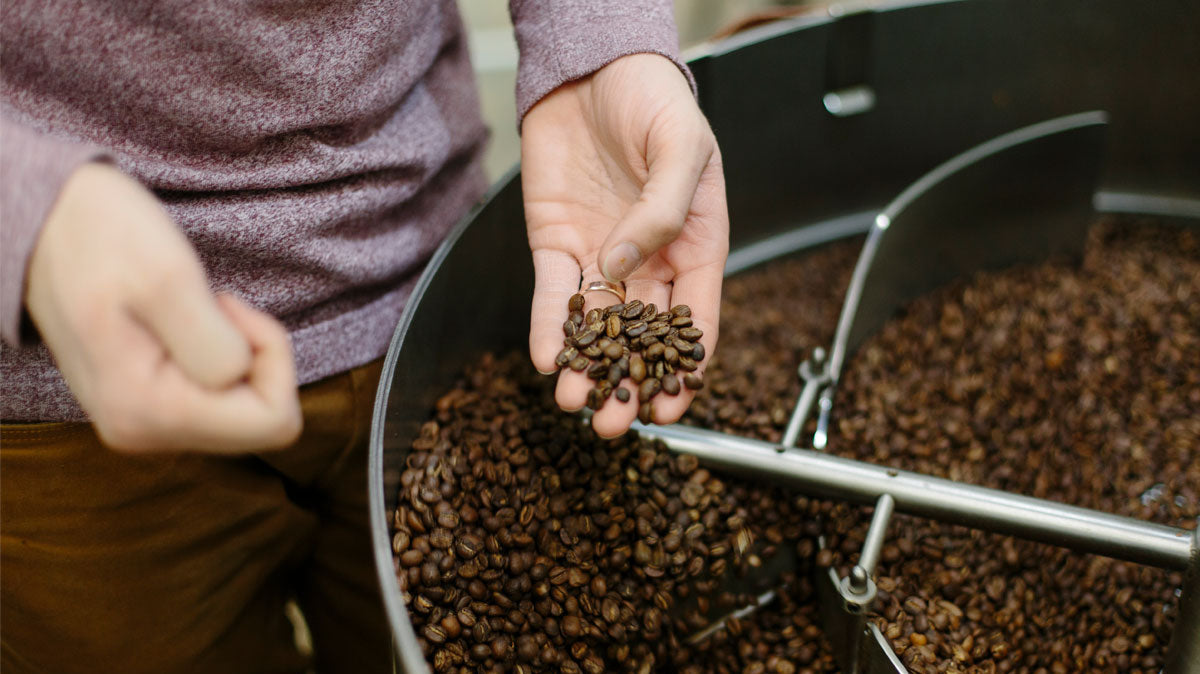Espresso is a creamy, rich, and concentrated coffee beverage that we love to enjoy in beverages like cappuccinos and lattes. Brewing a perfectly balanced espresso can be tricky, but we are here to help you in your journey of producing fantastic espresso beverages.
What is Espresso
Espresso is very concentrated coffee. It’s produced by a machine that pushes pressurized hot water through a puck of finely ground coffee to produce a serving size of around .75oz to 2oz in a 2:1 ratio of water to coffee. Espresso is instantly recognizable not only by its serving size, but by the layer of cream colored microfoam that naturally forms at its surface called crema. Espresso is not a type of coffee bean. Though you’ll find bags of coffee with “espresso” written on them, you can use any coffee to brew espresso.
What is the Difference Between Espresso and Coffee?
Espresso is simply a method for brewing coffee. But what you get when you order a coffee all depends on where you are in the world. In some parts of the world, like the US, when you order a coffee the barista will assume you’re referring to a coffee that was brewed on a batch brewer with a paper filter where the water to coffee ratio is around 15:1. But in other parts of the world, like in Italy, the barista will assume you’re referring to espresso when you order a coffee because in that culture, espresso is the dominant way to consume and enjoy coffee.
How Do Espresso Machines Work?
If you’ve ever looked under the hood of an espresso machine, it may look similar to what’s under the hood of your car—tubes, wires, and gauges running everywhere. The purpose of all those parts is to simply push a small amount of precisely pressurized and temperature controlled hot water through finely ground coffee.
Every espresso machine contains some type of water pump that pulls water from its reservoir, or its direct water source, and into its boiler. Higher-grade espresso machines contain 2 water boilers, one for brewing the coffee and the other for steaming milk, whereas lower-grade machines contain one boiler to serve both operations. The water is held at temperature and pressure within the boiler and is released to the group head where it meets the coffee, or to the steam wand to froth and heat your milk. The pressure of the water when it meets the coffee within the group head is typically 9 bars (9 times the atmospheric pressure found at sea level). The group head contains the portafilter which is basically a perforated metal basket that contains the ground coffee. The portafilter has a handle that allows the barista to easily insert and remove the portafilter without burning their hand.
If you’re interested in purchasing an espresso maker, check out our guide to home espresso makers.
Espresso Coffee Ratio
For espresso, the ideal ratio of water to coffee is 2:1. This means 2 parts of water to 1 part of coffee. This is very concentrated coffee. Which is why espresso is often added to milk to dilute it. The ratio of espresso to milk is where we get all the lovely Italian names such as macchiato, cortado, cappuccino, or latte. There’s not a whole lot of difference between these drinks other than the ratio of milk to espresso.
Learn more about coffee to water ratios.
Espresso Coffee Grind
Espresso is not the finest grind you’ll find when brewing coffee. Espresso grind is far finer than you’d grind for brewing a pour over, but it’s less fine than brewing Turkish coffee. If coffee is ground too fine, the water will create channels through the espresso and your espresso will not taste great. We recommend a fine grind that can feel like ground cinnamon.
Learn more about coffee grinding on our How to Grind Coffee guide.
Espresso Coffee Recipe
- Water to coffee ratio: 2:1
- Water: 36g
- Coffee: 18g
- Grind: Fine (ground cinnamon)
How to Make Espresso Coffee
- Step 1 - Remove your portafilter from the group head and ensure it’s clean and dry. Set it on your kitchen scale and tare it so you’re just weighing the coffee.
- Step 2 - Grind 18 grams of finely ground coffee into the portafilter. Use your hand or a distribution tool to even out the coffee within the brew basket.
- Step 3 - Tamp the coffee using an espresso tamp. Apply light pressure with your fingertips and not the palm of your hand. This will help ensure you apply pressure evenly and the bed of coffee is perfectly flat.
- Step 4 - Insert the portafilter into the group head and set a shot glass on top of a scale, under the portafilter basket.
- Step 5 - Start pulling your shot and look for a yield of 36 grams of coffee within 28-32 seconds.
- Step 6 - If the shot pulls too fast, slightly adjust the grind to be finer. If the shot pulls too slow, adjust your grind to be coarser.
Learn more: How to Pull a Shot of Espresso
